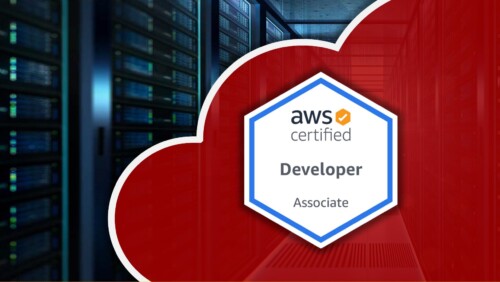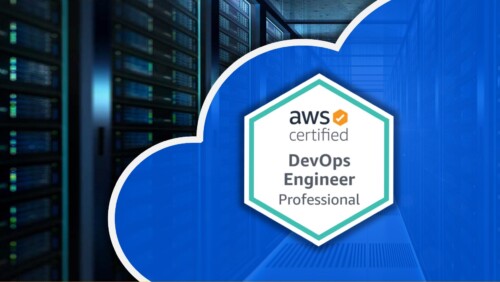Description
Overview
The CompTIA Server+ certification is a trusted certification that proves an individual can perform their duties in a range of environments, while fully understanding the implications of the work they are performing.
A stable server is an absolute must for any organization. Any time a server is down a business loses money, customers, and trust. By maintaining a stable server environment, business activities can flow as intended.
Individuals may successfully earn this certification after showing they can configure essential hardware and software technologies on both on-premises and hybrid server environments. Additional skills include server related cloud computing and scripting.
Enterprise organizations are actively looking for individuals who possess the skills the CompTIA Server+ certification validates. This includes installing and configuring servers and operating systems, troubleshooting common server problems, and demonstrating key disaster recovery, high availability, and backup concepts.
- 28:15:00 Hours
- 12 Months Access
- Presented by highly qualified, industry leading experts
Course Details
Objectives
- Virtual Server Essentials
- Understanding Storage Systems
- Configuring and Maintaining Storage Systems
- Server Security Essentials
- Network Configuration and Administration
- Server Disaster Recovery
- Troubleshooting Server Problems
Audience
- IT administrators responsible for server hardware installation, support and management.
- System and network engineers who wish to add data center expertise to their skillset.
- IT professionals taking the first steps towards becoming server system specialists.
Prerequisites
- Before starting your journey to become CompTIA Server+ certified, we recommend that you meet the following prerequisites:
Prior to starting Server+ exam preparation
- CompTIA A+ certification.
- CompTIA Network+ certification highly recommended.
- 1+ years’ experience working in an IT environment.
Prior to taking the CompTIA Server+ exam:
- Completion of our CompTIA Server+ training program.
- 2 Yearshands-on experience in the lab or field working in a server environment.
- Thorough understanding of all topics detailed in the exam objectives.
Course Outline
The Server+ certification proves your adeptness in server architecture, server administration, storage, security, networking, and more. The goal of this curriculum is to equip exam takers to fully comprehend the ins and outs of server management from a variety of perspectives.
Server Architecture
- Explain the purpose and function of server form factors.
- Given a scenario, install, configure and maintain server components.
- Compare and contrast power and cooling components.
Server Administration
- Install and configure server operating systems.
- Compare and contrast server roles and requirements for each.
- Given a scenario, use access and control methods to administer a server.
- Given a scenario, perform proper server maintenance techniques.
- Explain the importance of asset management and documentation.
- Explain the purpose and operation of virtualization components.
Storage
- Given a scenario, install and deploy primary storage devices based on given specifications and interfaces.
- Given a scenario, configure RAID using best practices.
- Summarize hardware and features of various storage technologies.
- Given a scenario, calculate appropriate storage capacity and plan for future growth.
Security
- Compare and contrast physical security methods and concepts.
- Given a scenario, apply server hardening techniques.
- Explain basic network security systems and protocols.
- Implement logical access control methods based on company policy.
- Implement data security methods and secure storage disposal techniques.
- Given a scenario, implement proper environmental controls and techniques.
Networking
- Given a scenario, configure servers to use IP addressing and network infrastructure services.
- Compare and contrast various ports and protocols.
- Given a scenario, install cables and implement proper cable management procedures.
Disaster Recovery
- Explain the importance of disaster recovery principles.
- Given a scenario, implement appropriate backup techniques.
Troubleshooting
- Explain troubleshooting theory and methodologies.
- Given a scenario, effectively troubleshoot hardware problems, selecting the appropriate tools and methods.
- Given a scenario, effectively troubleshoot software problems, selecting the appropriate tools and methods.
- Given a scenario, effectively diagnose network problems, selecting the appropriate tools and methods.
- Given a scenario, effectively troubleshoot storage problems, selecting the appropriate tools and methods.
- Given a scenario, effectively diagnose security issues, selecting the appropriate tools and methods.
Top of Form
SERVER ARCHITECTURE
- Overview
- Server Form Factors
- Server Components
- Server Components Part 2
- Power and Cooling
- Power and Cooling Part 2
SERVER ADMINISTRATION
- Installing a Server OS
- Installing a Server OS Part 2
- Installing a Server OS Part 3
- Installing a Server OS Part 4
- Server Roles and Requirements
- Administering a Server
- Server Maintenance
- Server Maintenance Part 2
- Server Maintenance Part 3
- Server Maintenance Part 4
- Asset Management and Documentation
- Asset Management and Documentation Part 2
- Virtualization
STORAGE
- Primary Storage Devices
- Configuring RAID
- Configuring RAID Part 2
- Storage Technologies
- Storage Capacity
SECURITY
- Physical Security
- Server Hardening
- Network Security
- Network Security Part 2
- Secure Storage Disposal
- Logical Access Control
- Logical Access Control Part 2
- Environmental Controls
- Environmental Controls Part 2
- Environmental Controls Part 3
NETWORKING
- IP Addressing and Services
- IP Addressing and Services Part 2
- Ports and Protocols
- Cable Management
- Cable Management Part 2
DISASTER RECOVERY
- Disaster Recovery Principles
- Backup Techniques
TROUBLESHOOTING
- Troubleshooting Methodologies
- Troubleshooting Hardware
- Troubleshooting Software
- Troubleshooting Software Part 2
- Troubleshooting Software Part 3
- Troubleshooting Networking
- Troubleshooting Networking Part 2
- Troubleshooting Networking Part 3
- Troubleshooting Storage
- Troubleshooting Security
- Troubleshooting Security Part 2
- Troubleshooting Security Part 3



